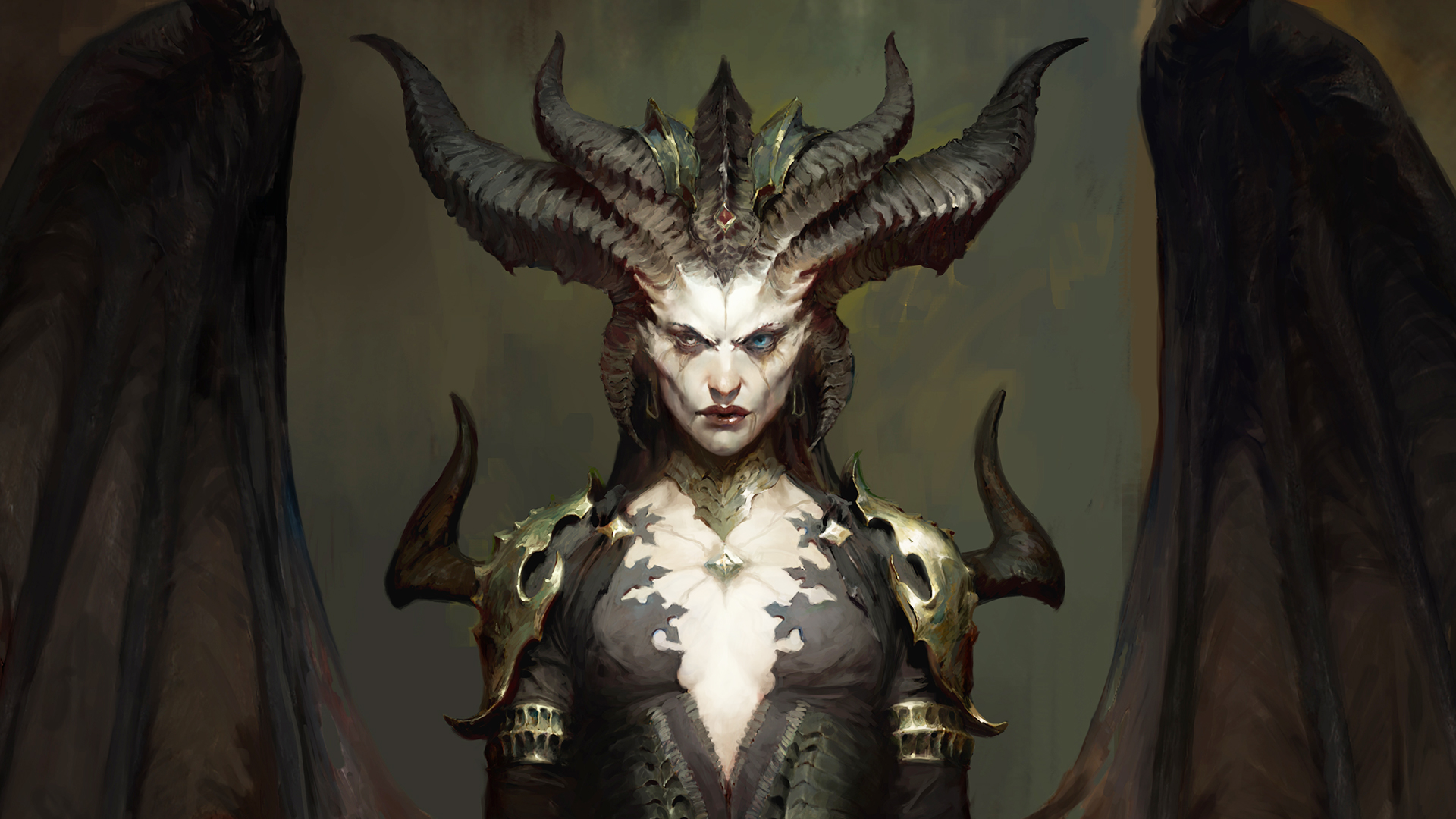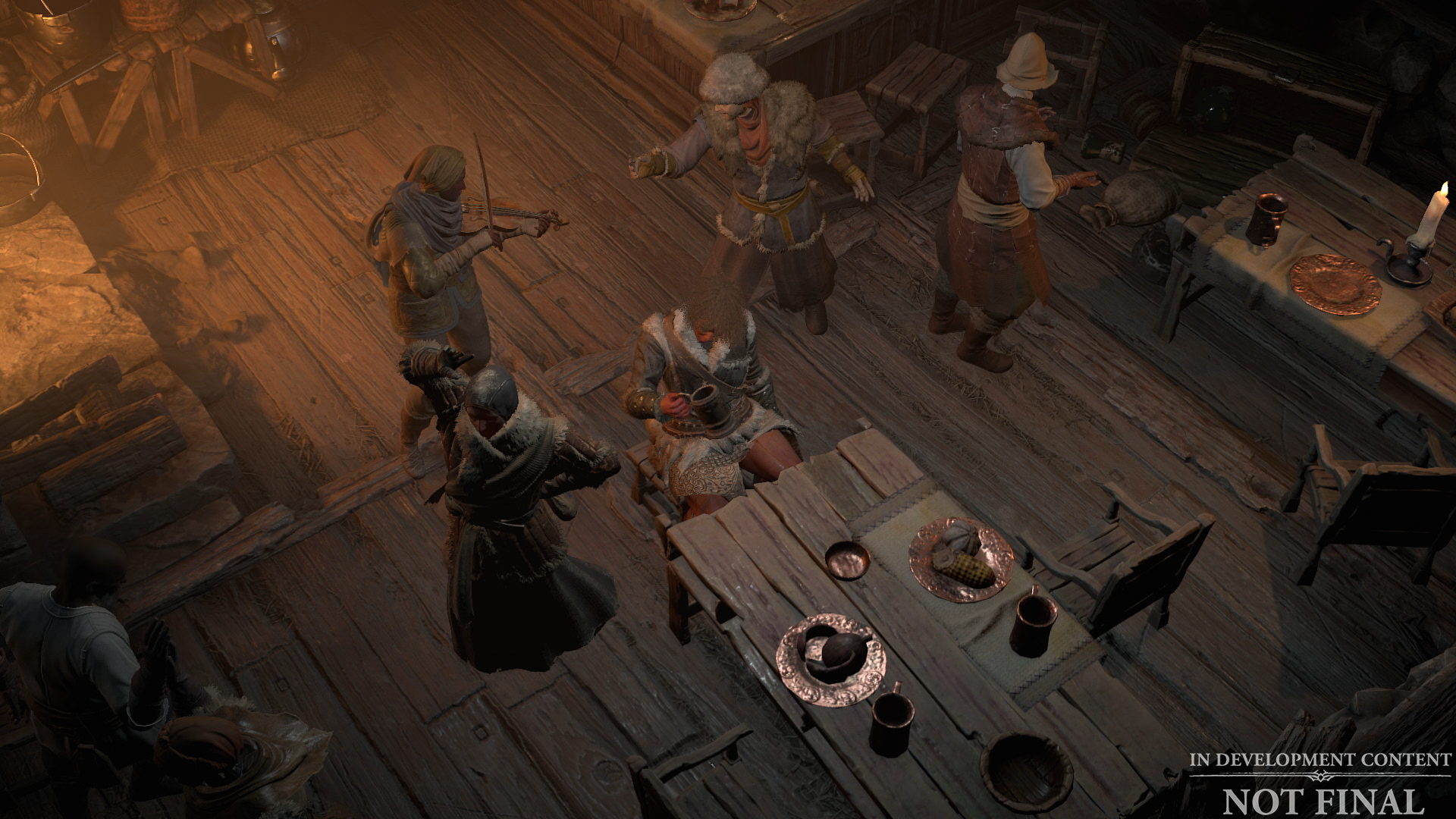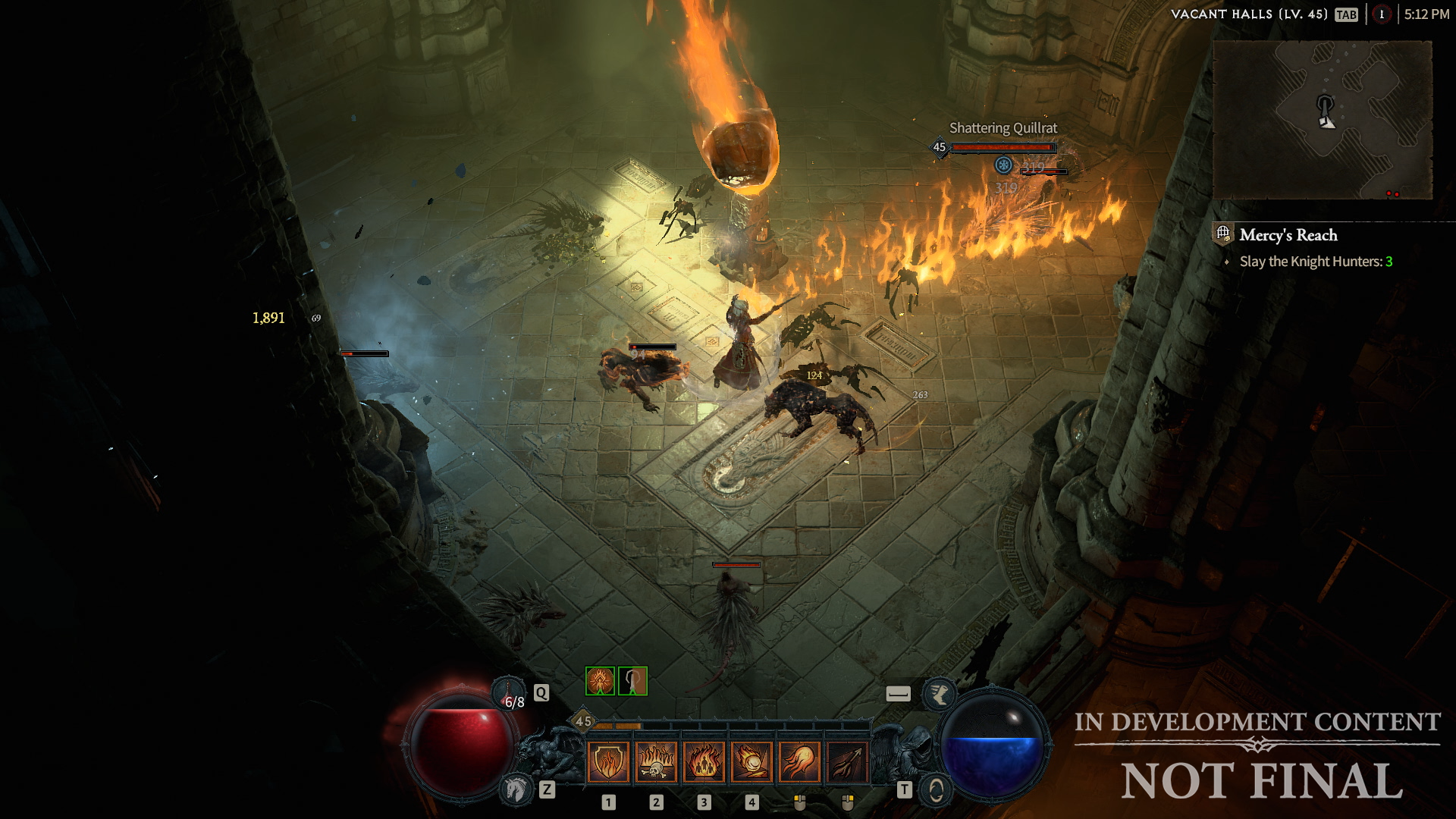Diablo 4 is the Diablo I've been waiting for
Blizzard's long-awaited sequel is extraordinarily satisfying to play within minutes.

My sorceress is probably freezing. I've given her an arsenal of spells that make ice fly out of her hands, and one of them spawns a snowstorm directly above her head. I click and click while she does the actual work of casting frost spells at legions of demons from hell. If I were adventuring in the frigid Fractured Peaks, I'd invest in fire spells, but the gloves I found give my sorceress rank 1 frozen orb and her build would be nothing without it. So frost spells it is.
That's just how the math works out in Diablo 4, the long-awaited Blizzard action-RPG that was announced way back in 2019. A few frost bolts and a frozen orb are enough to slow weak hellspawn down, but a blizzard and a frozen orb can freeze an elite one in place, teeing them up for critical damage. And if I can get the big guys frozen before I've drained over half my mana, they do even more damage—maybe even enough for a one-shot.
I think in terms of cold damage efficiency because that's the build I've chosen over the 10 or so hours I've spent playing Diablo 4's first act. There are dozens of choices to make about your character before you leave the introductory zone. Every level you gain is an opportunity to drop a point into the skill tree and expand your toolbox as the monsters get nastier. Frost bolt starts as your main focus and quickly becomes the filler spell between frozen orbs, blizzards, ice blades, and ice armor windows. It's on you to work out the order of operations and adjust your skills accordingly. You can spend a few gold to unlearn skill and place the points elsewhere, and sometimes rare gear will give a spell for free—which is why my sorceress is stuck with those frozen orb gloves.
I've cleared enough dungeons while playing on Diablo 4's hard difficulty to know that my spellcaster can't take very many swipes before she's just a bloody pile of robes. Outside in the storm, where you trudge past pockets of beasts, it's easy to keep my distance, but squished inside the dungeons, there's no room to run. I'd think about refunding the two points in "glass cannon"—which significantly increases the damage I take and the damage I deal—if it were not for ice armor. Much like AoE farming as a Frost Mage in World of Warcraft, I gather up demons like sheep, don ice armor and fill the next six seconds with a winter deadlier than the one in Westeros.
Every frost spell I own synergizes with ice armor. The more cold damage I deal the more temporary armor I gain, and each spell hits for 30% more damage. Most of the main spells in the skill tree have passive enhancements that hook up with other spells in the same category. If I were a fire sorcerer, I could cause flame shield to burn every enemy around me for ticking damage which could trigger a meteor to fall from the sky and eradicate them all.
Diablo 4 reminds me why other action-RPGs don't do it for me. It either takes too long to earn enough abilities to formulate a plan or they drop so many on you that it's overwhelming. Blizzard knows exactly how quickly to fill your spellbook and when to introduce a new wrinkle to get you thinking.
Before I left off in the preview build, I picked up the ability to slot a spell into an enchantment slot, which grants me a passive buff. Now, I can cast blizzard, but also have a blizzard spawn on top of me every four seconds. The free blizzard stacks with the one I cast and both of them fuel my ice armor. I love the passive Blizzard for two reasons: it's a satisfying, periodic shift in my usual routine and it haphazardly destroys every chair and table in my path as I walk through harmless rooms.
Keep up to date with the most important stories and the best deals, as picked by the PC Gamer team.
Lights out

Playing Diablo 4 is much closer to playing Elden Ring than I thought it would be.
The sheer level of destructive power I have and the apocalyptic state of Sanctuary are hard to square. Diablo 3's Reaper of Souls expansion ended with the extinction of 90% of all humans. Diablo 4 begins in a frozen wasteland where people cling to flickering torches and faith. You meet people in and around the main city of Kyovashad who believe something or someone is coming to Sanctuary. Lilith, the demon mother of the humans who we saw in the BlizzCon cinematic, is set up as that someone early in your journey, but I doubt that's the whole story. And considering how fast my sorcerer is becoming a godlike being (with a mysterious mark from Lilith) it feels possible I might be the someone that's coming to Sanctuary to make things worse.
Blizzard has said that Diablo 4 is a "return to darkness" to evoke the tone of Diablo 2 instead of 3, but the absurdity of playing as a walking winter storm participating in open world events where demons crawl out of the ground like ants at a picnic doesn't quite match the vibe that it's pitching.
Playing Diablo 4 is much closer to playing Elden Ring. Muted colors, broken people, and broken buildings are all over the place. Violin strings fill the space as you poke around the open world and dungeons, but then a treasure goblin pops out and you're a cat who heard the crinkle of a bag of treats. Diablo is still an RPG where you make loot pop out of demons like pinatas. I trust FromSoftware to nail an absurd, gloomy fantasy world with bipedal mushrooms that punch you into another dimension, but these days, Blizzard isn't as practiced at it.

One sidequest sent me deep into a dungeon to find a man's lost son who had been framed for a murder. I found the boy dead and when I returned to the man, he revealed that he was the one who'd committed murder and blamed it on his son. The brusque two-step hop from quest setup to tragic resolution made me laugh. There are plenty of sidequests in Elden Ring that are equally as sad, but they happen naturally in the world and often include idiosyncratic characters. And since Diablo games are largely treadmills for demon slaying, these quests do a flimsy job at reminding you you're in a grim world and not a playground. They don't have to heap on stakes at the last second; brevity, I think, will be the key to balancing the tone. Most of the sidequests I finished weren't this egregiously over-written, but I'm not fully convinced Diablo 4 will remain as subdued as the multi-act and multi-zone campaign progresses.
Diablo's hyper-serious story, with its warring angels and demons, has always been hard for me to get into, but that might be the only thing that keeps Diablo 4 from being the action-RPG I've been waiting for. The satisfying complexity in its combat has me scrolling through the skill tree and imagining what sorts of builds I could try next, and that's only for the sorceress. The brief time I spent with the rogue (new characters start with bonus skill points from levels earned by your main) scratched the same itch. Diablo—not the depressingly exploitative version of Diablo—is finally back.
Tyler has covered videogames and PC hardware for 15 years. He regularly spends time playing and reporting on games like Diablo 4, Elden Ring, Overwatch 2, and Final Fantasy 14. While his specialty is in action RPGs and MMOs, he's driven to cover all sorts of games whether they're broken, beautiful, or bizarre.

